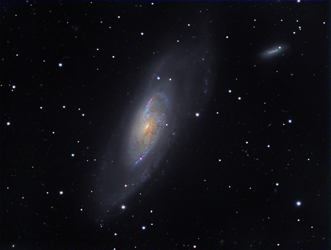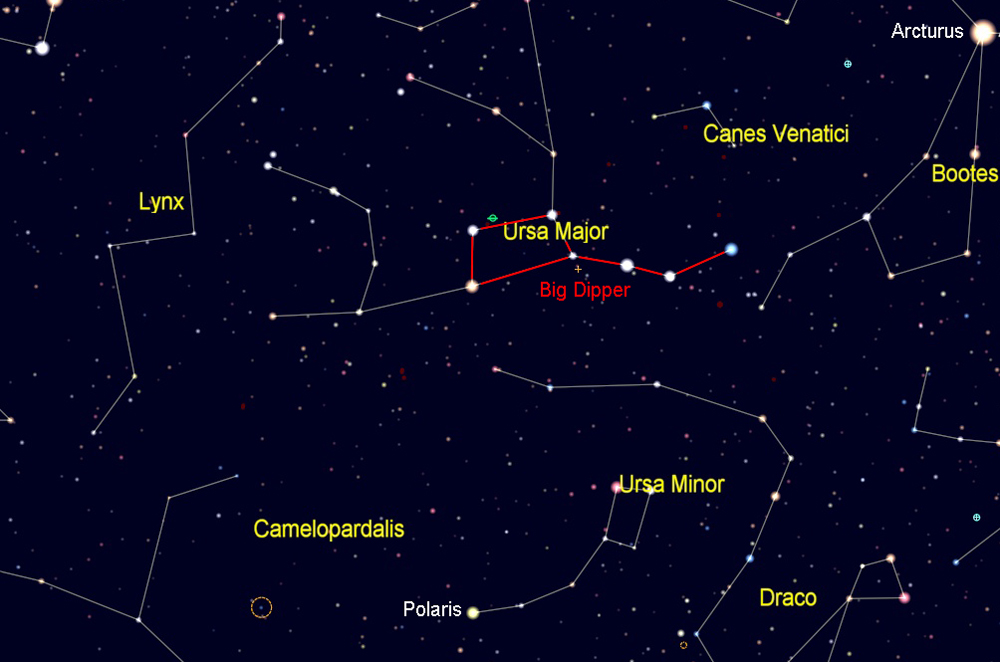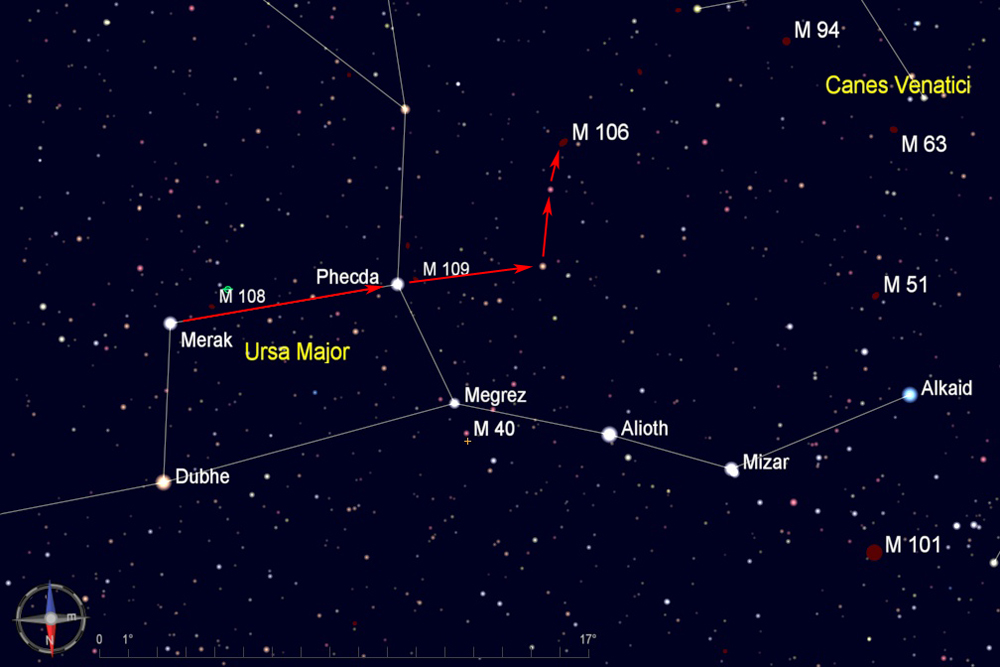| This bright spiral galaxy is about 25
million light years away. At magnitude 8.4, its oblong shape can be seen in just about any telescope, and large scopes will reveal some of the structure of its spiral arms and dust lanes. The
diameter of this galaxy is
about 125,000 light years, which makes it larger than our own Milky
Way galaxy, which is about 100,000 light years across. |
 |
| Evening visibility: |
February-August |
| Best viewed with: |
telescope |
| |
Printable chart (pdf) |
View larger image |
Directions:
Start by finding the Big Dipper, one of the most recognizable star patterns in the sky. It is part of the constellation Ursa Major, the big bear. It is shown here upside down, high in the sky above Polaris, which is where it can be found during the evenings in spring and summer. For other seasons and times of night, rotate the chart as needed to match what you see in the northern sky.
|
 |
| Note that north is to the bottom in this chart. Using the two stars on the bottom edge of the Big Dipper's bowl to guide you in the correct direction, look about 5 degrees east of Phecda for a magnitude 4.8 star that will be easy to spot in binoculars or a finderscope. Then move south about 3 degrees to a 5th magnitude star, then another 1.5 degrees south to reach M106. |
 |
| Star charts created with Cartes du Ciel |
| |
| |


